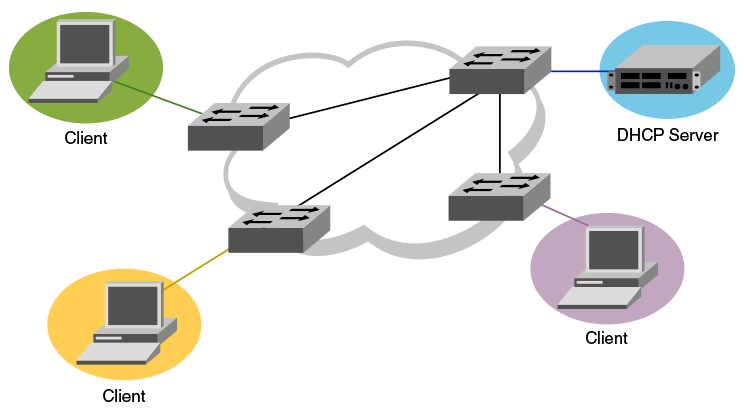Inter-VRF route leaking and DHCP relay
In a DHCP relay setting, route leaking is controlled through a single DHCP server (which may be on a different VRF); this permits multiple VRFs to communicate with that server, something that would normally not be permitted. DHCP relay deployments in a data center can use Inter-VRF route leaking to achieve server consolidation; this permits clients in multiple VRFs to communicate with a single DHCP server in a different VRF (normally this is not permitted, as VRFs provide route/traffic isolation).
About this task
The illustration below shows four VRFs, with three of them connecting to the fourth for DHCP services. (For more information on working with DHCP IP Relay, refer to the "DHCPv4" chapter.)

The following example shows setting up Inter-VRF route leaking and DHCP between the red VRF and the blue VRF.

Note
Inter-VRF route leaking supports both IPv4 and IPv6. Use the ip address and ip route commands for IPv4 and the ipv6 address and ipv6 route commands for IPv6. These commands support IP addresses, Ethernet interfaces, and virtual Ethernet (VE) interfaces for the leak destination. Refer to the Extreme SLX-OS Command Reference.
